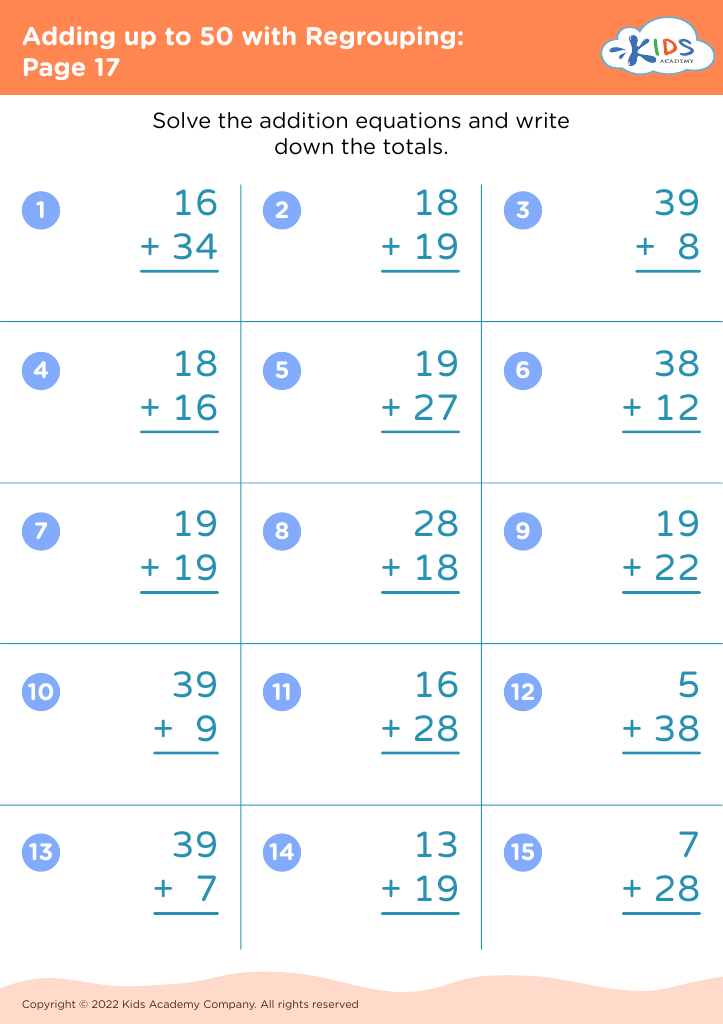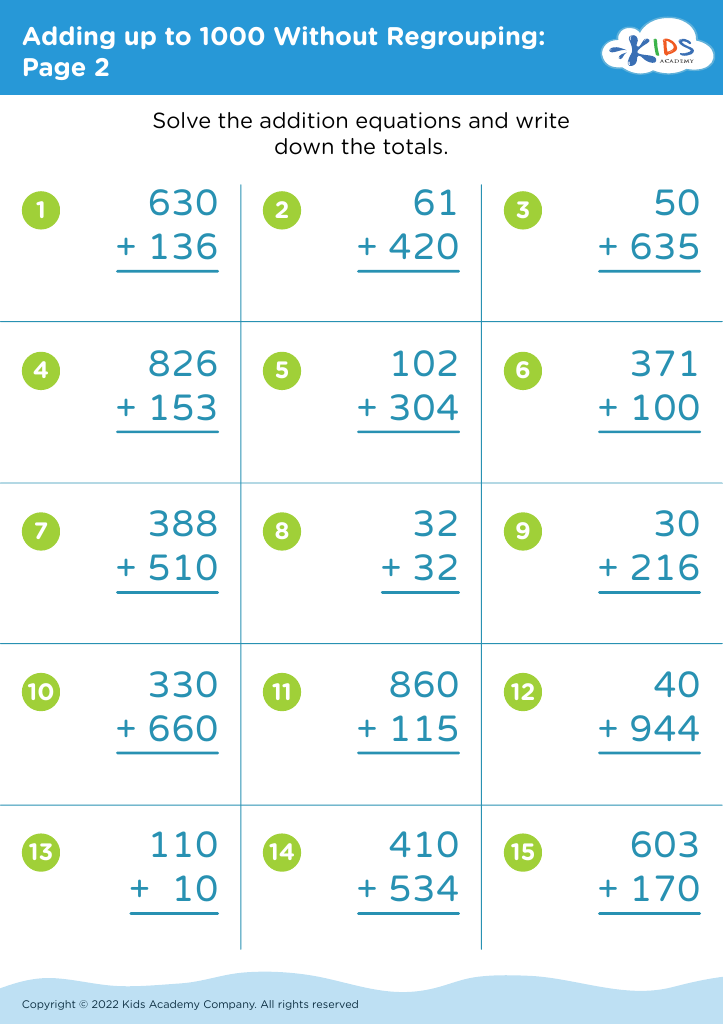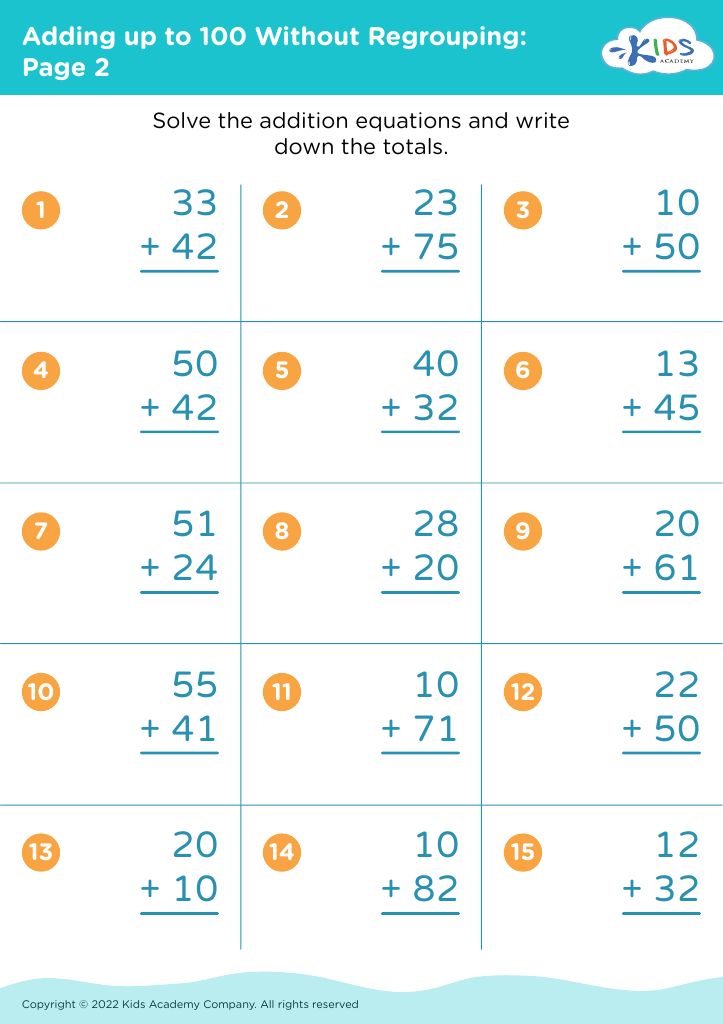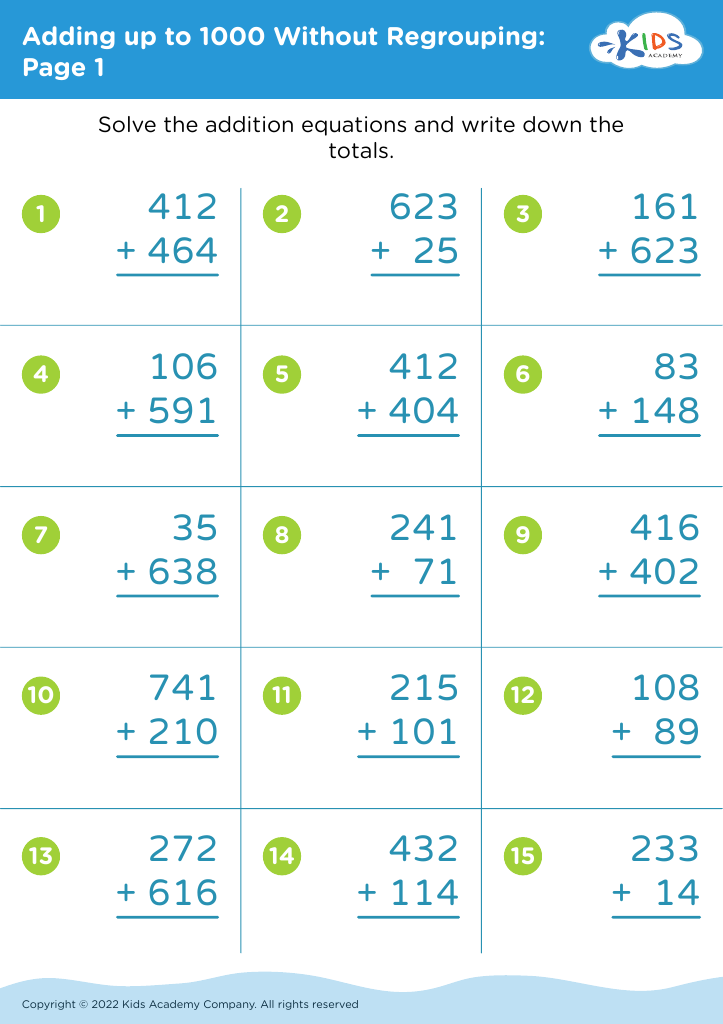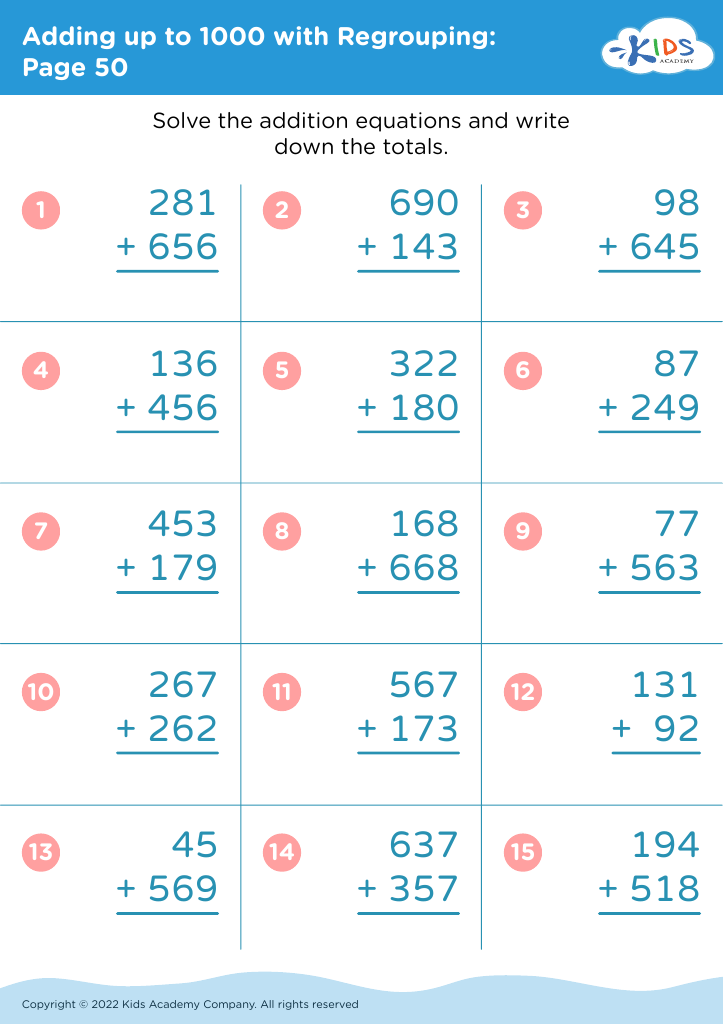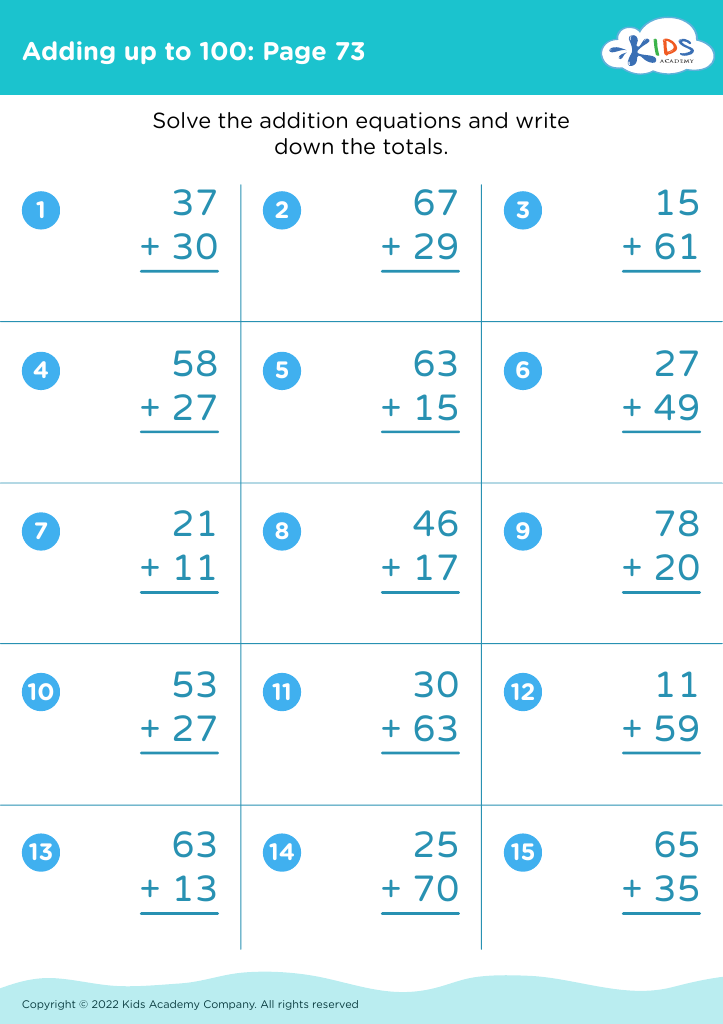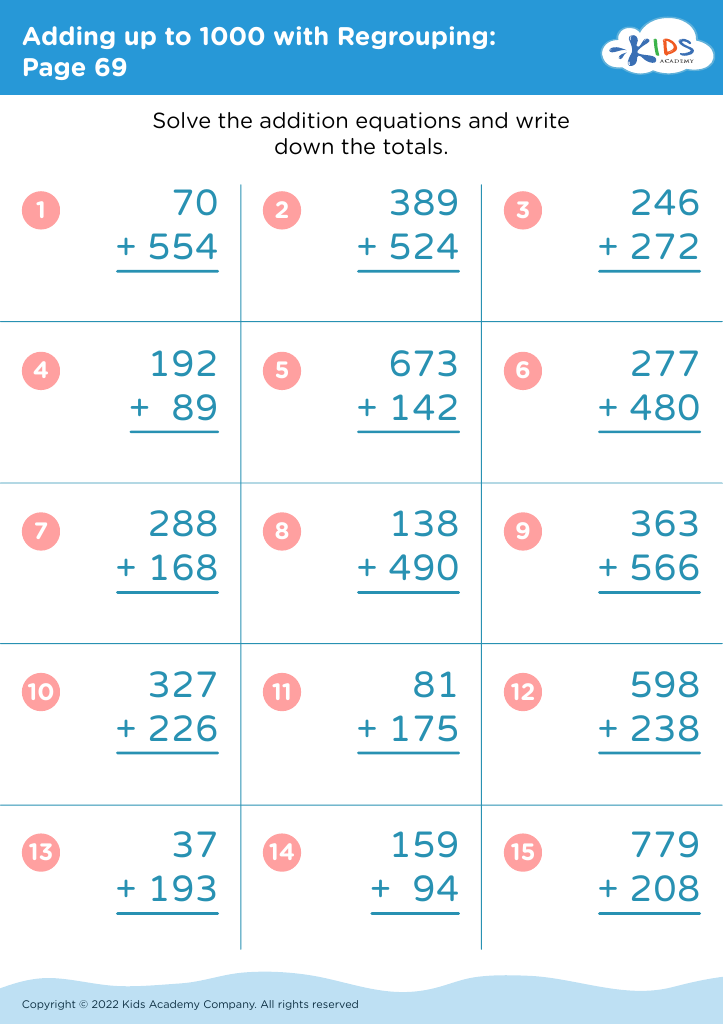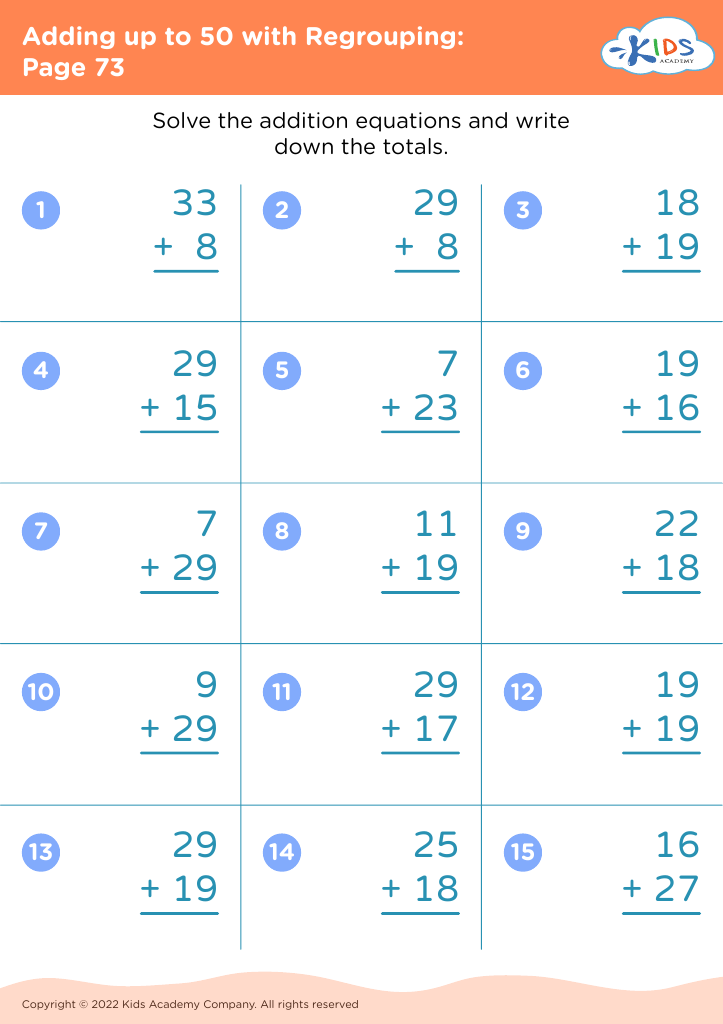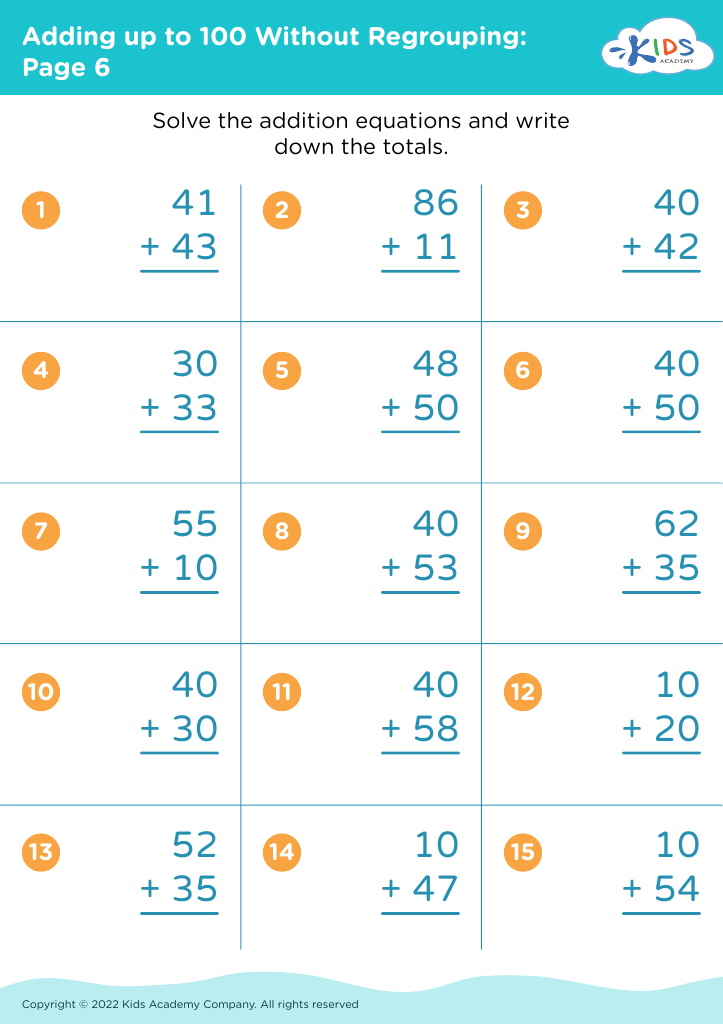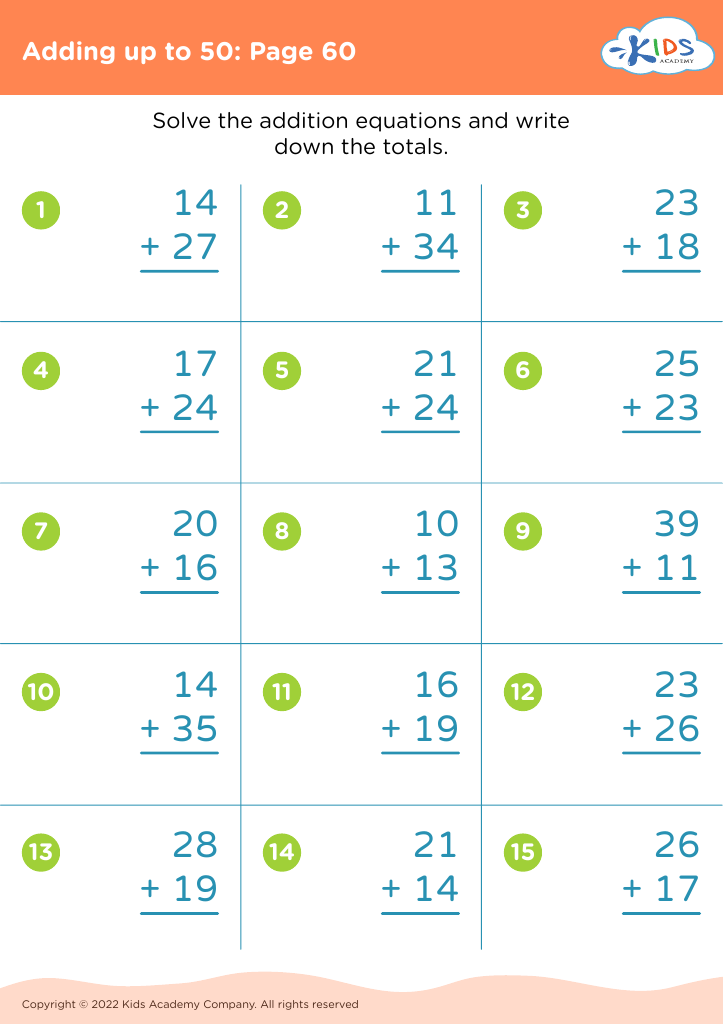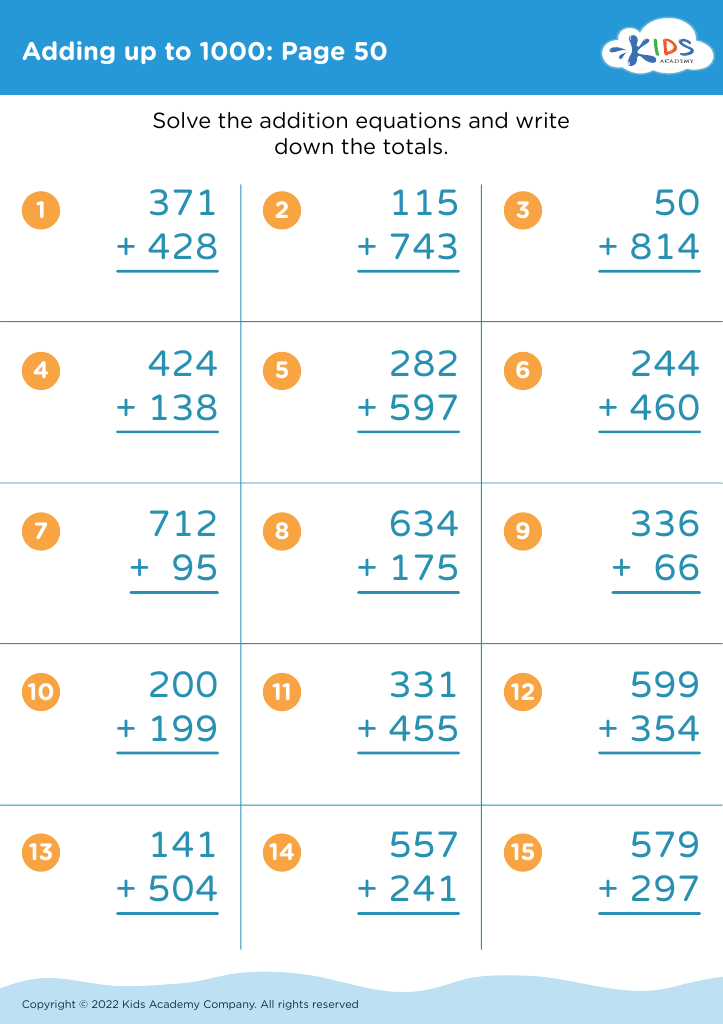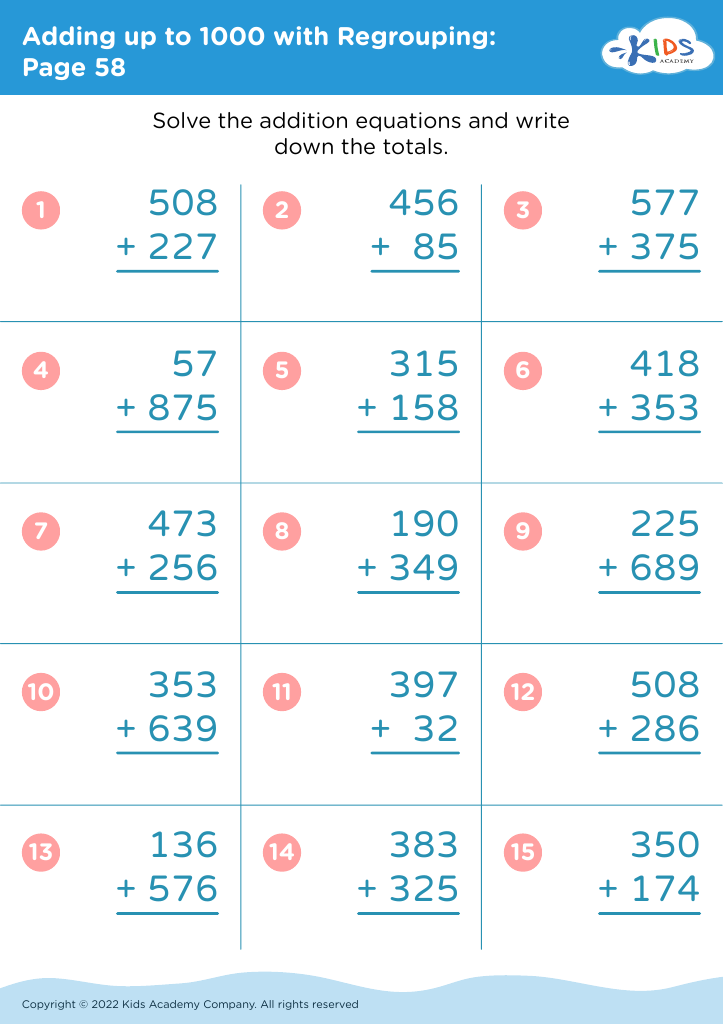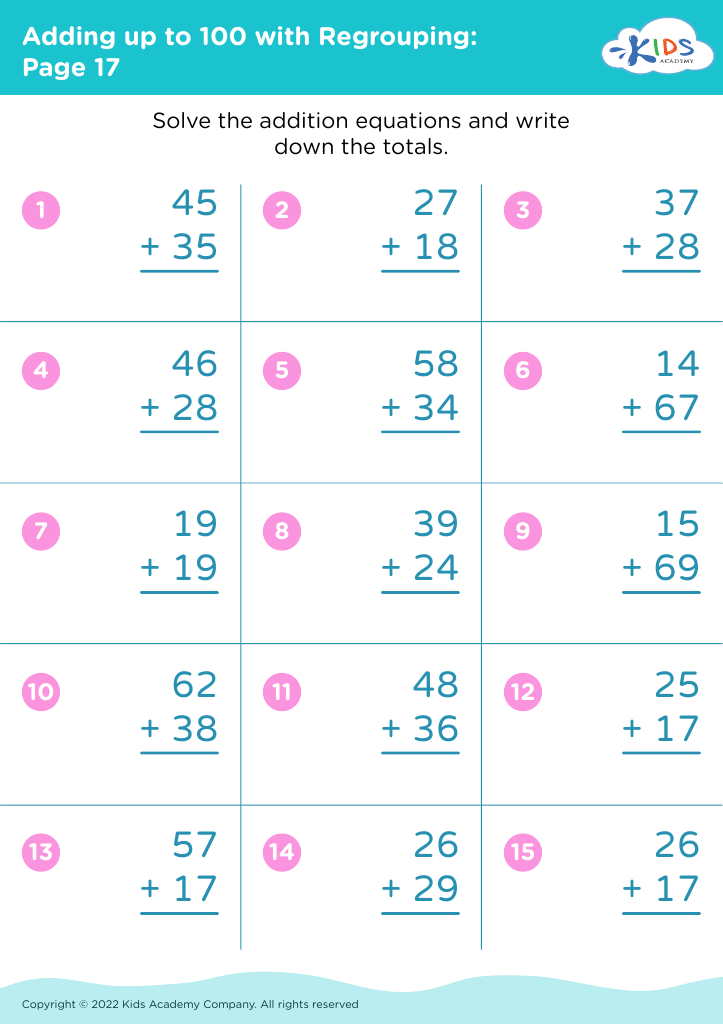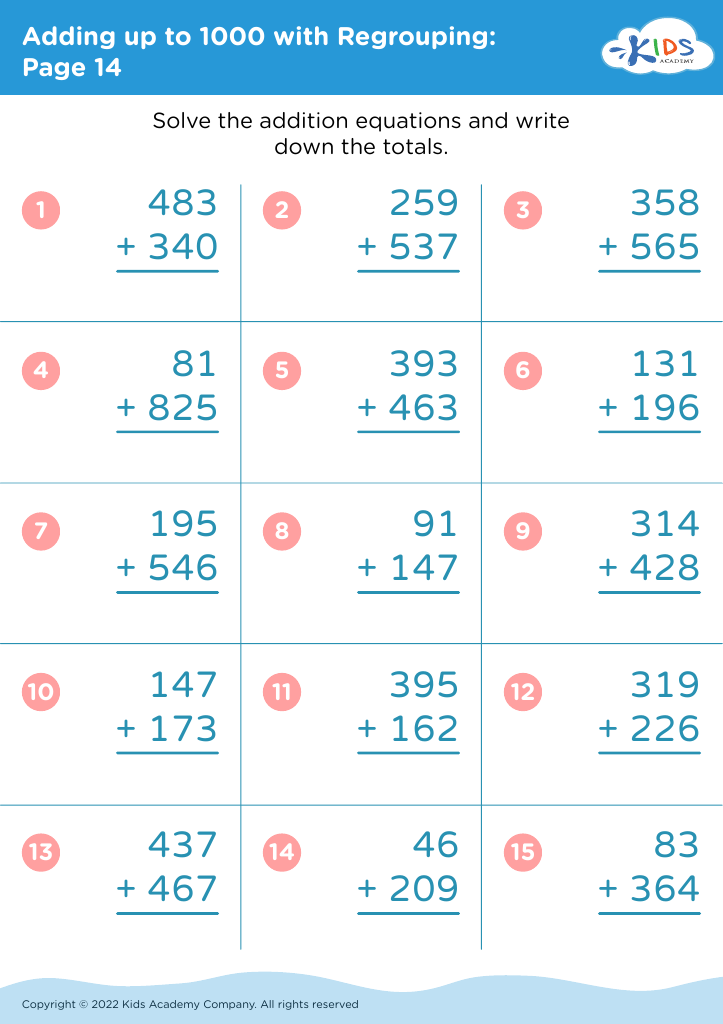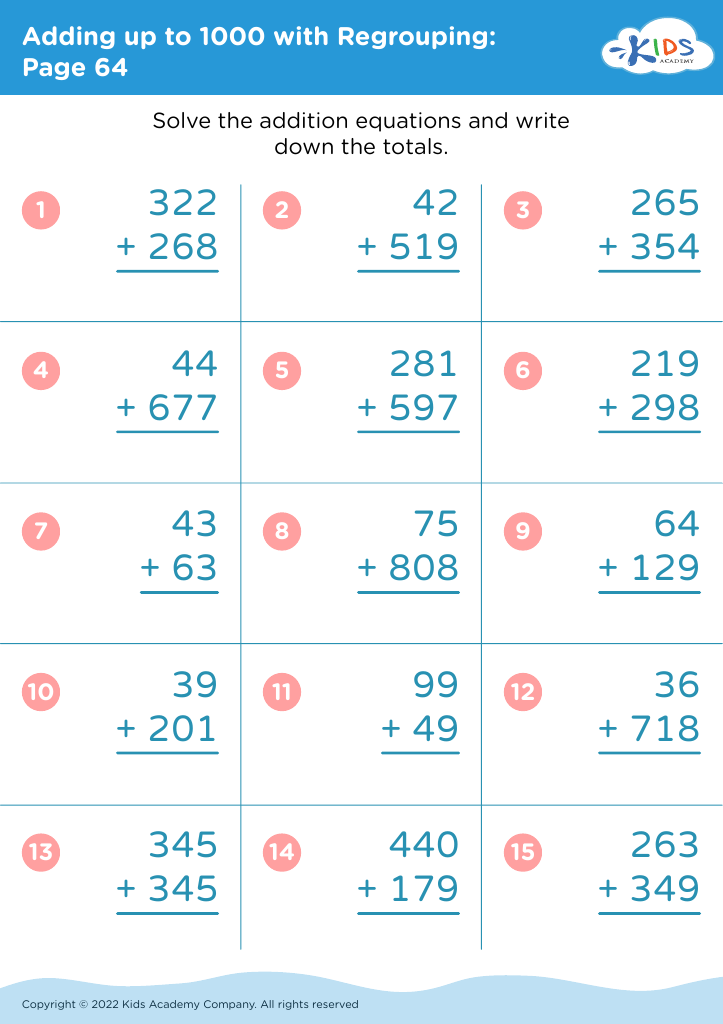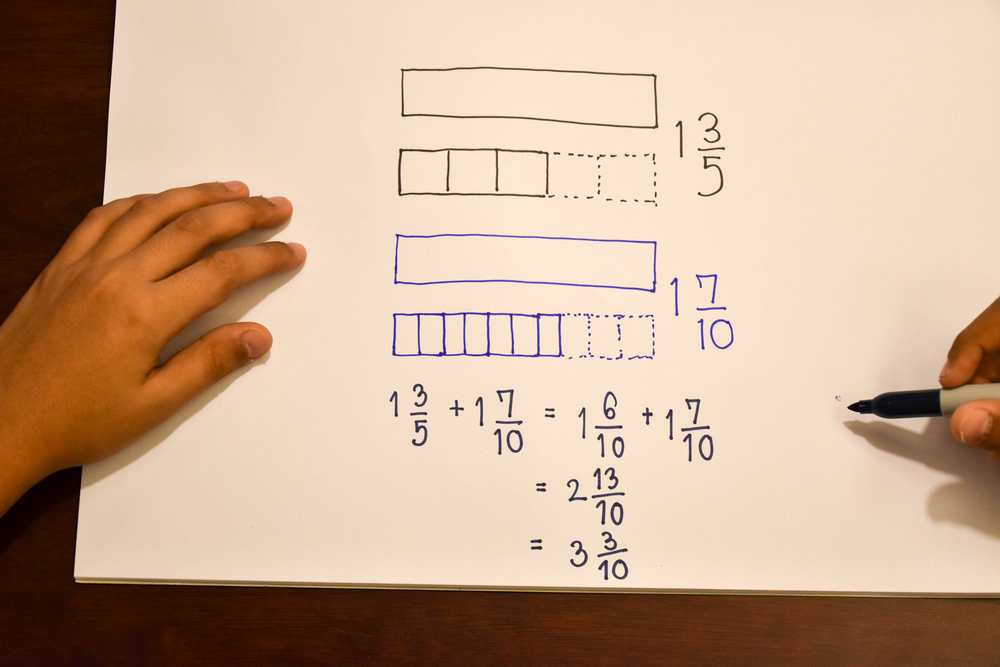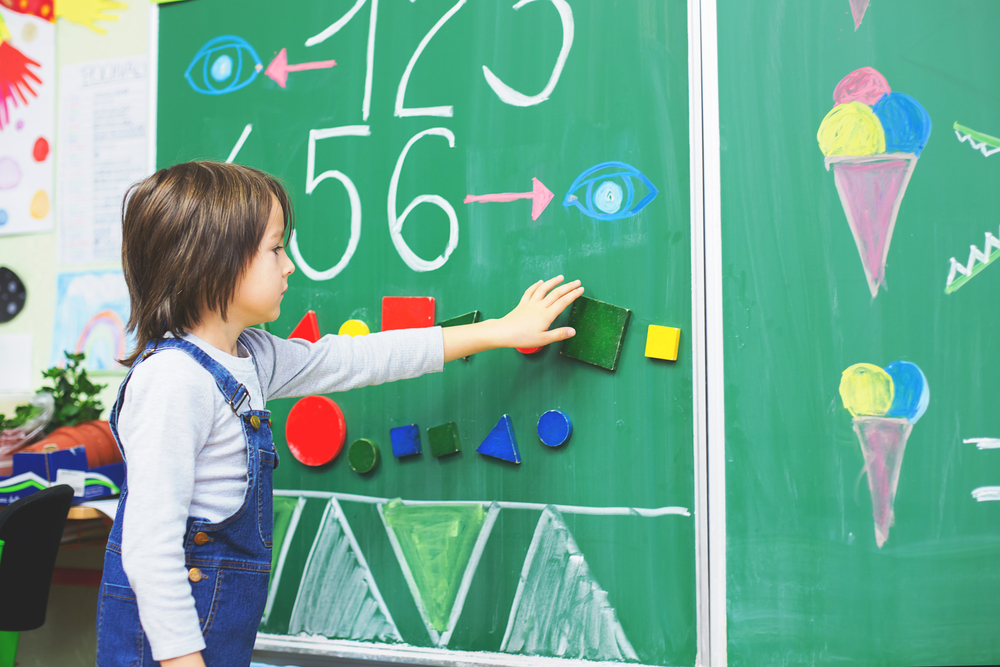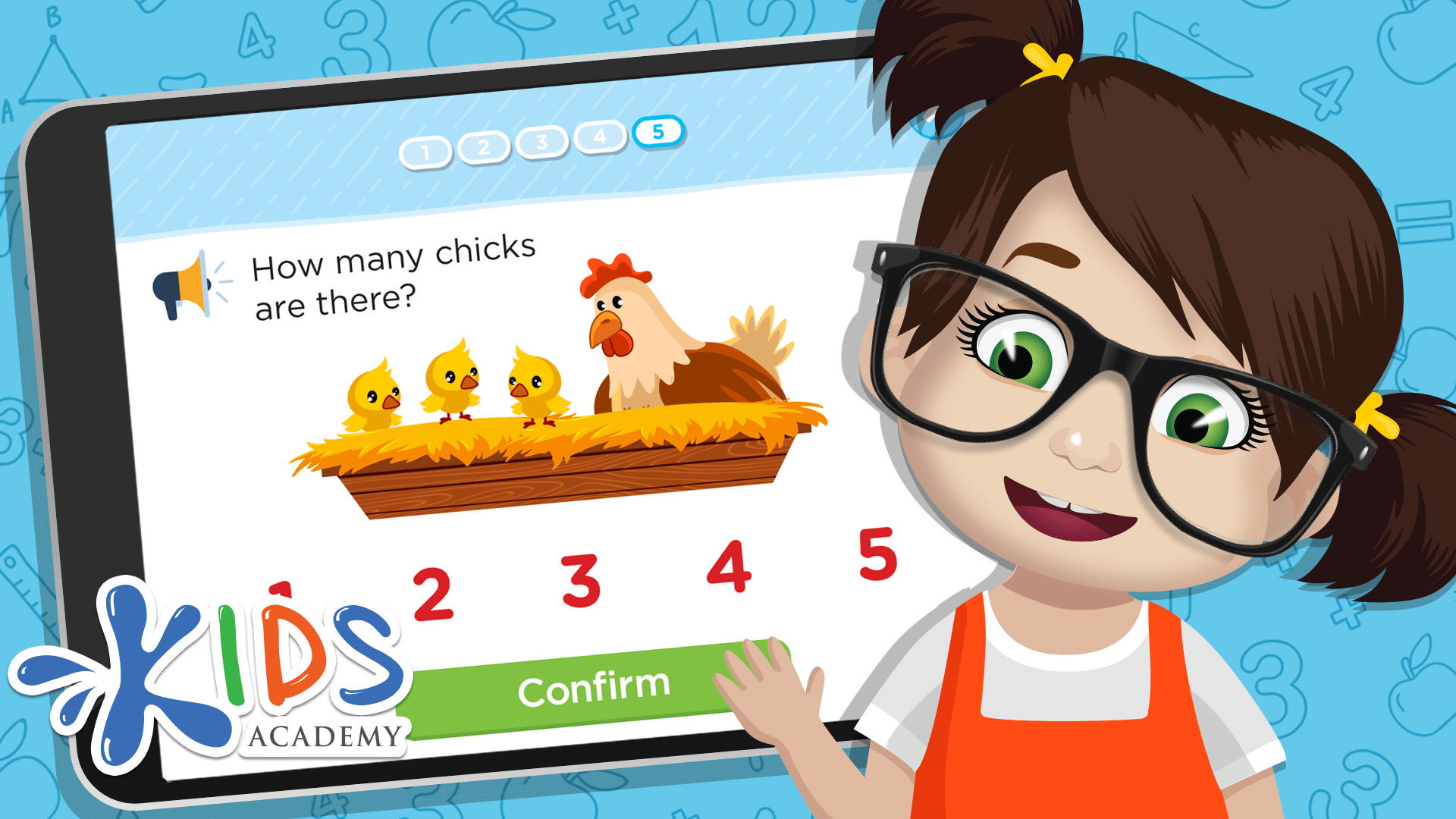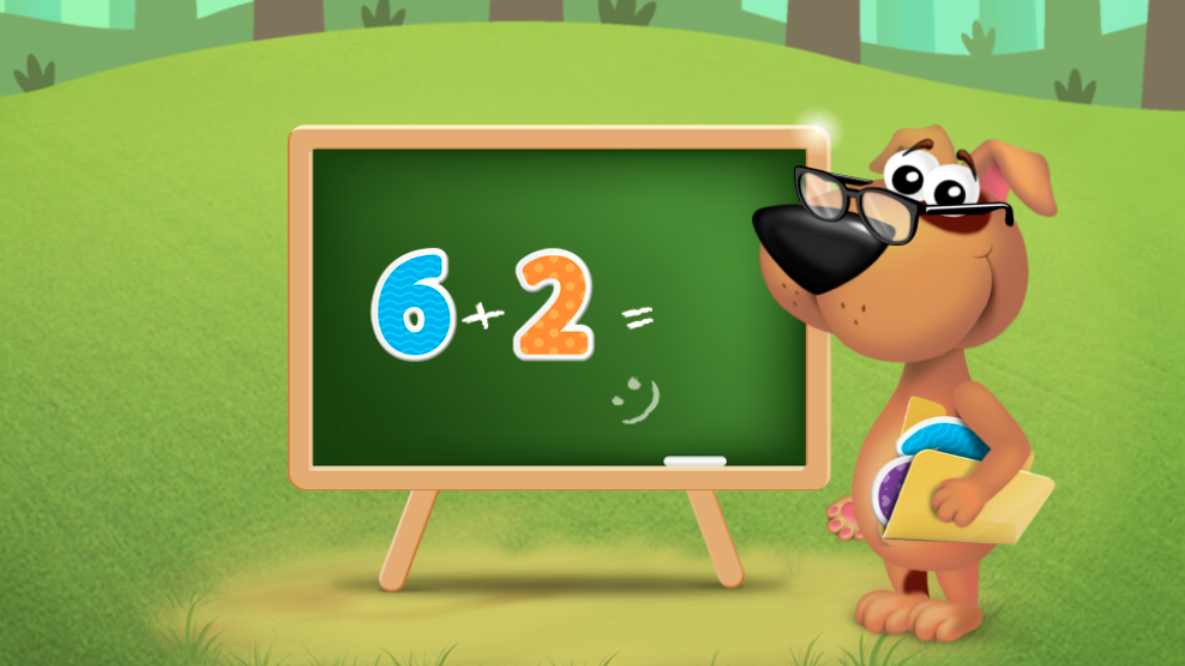Shape Recognition Addition & Subtraction Worksheets for Ages 7-9
33 filtered results
-
From - To
Unlock the world of mathematics with our Shape Recognition Addition & Subtraction Worksheets for ages 7-9. These engaging and carefully crafted worksheets combine essential arithmetic skills with shape recognition exercises to make learning math fun. Ideal for reinforcing addition and subtraction while identifying geometric shapes, our worksheets support cognitive development and problem-solving skills. Each worksheet is designed to challenge young minds, boost their confidence, and foster a love for learning. Discover a variety of colorful and interactive exercises, perfect for both classroom and at-home practice, tailored to meet the educational needs of children aged 7-9.
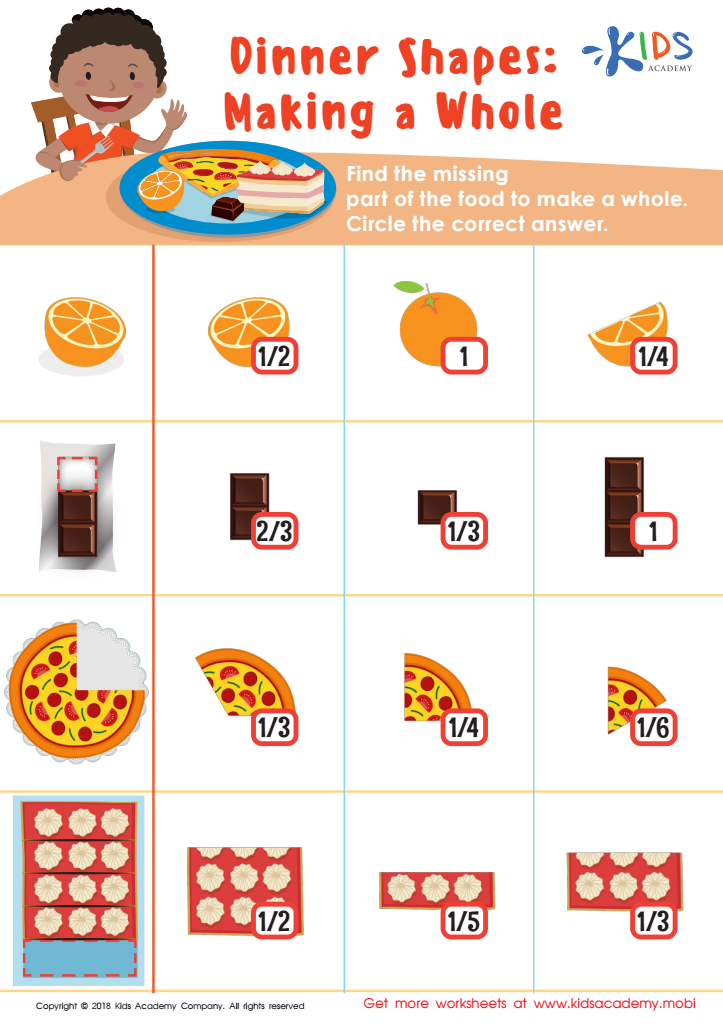

Dinner Shapes: Making a Whole Worksheet
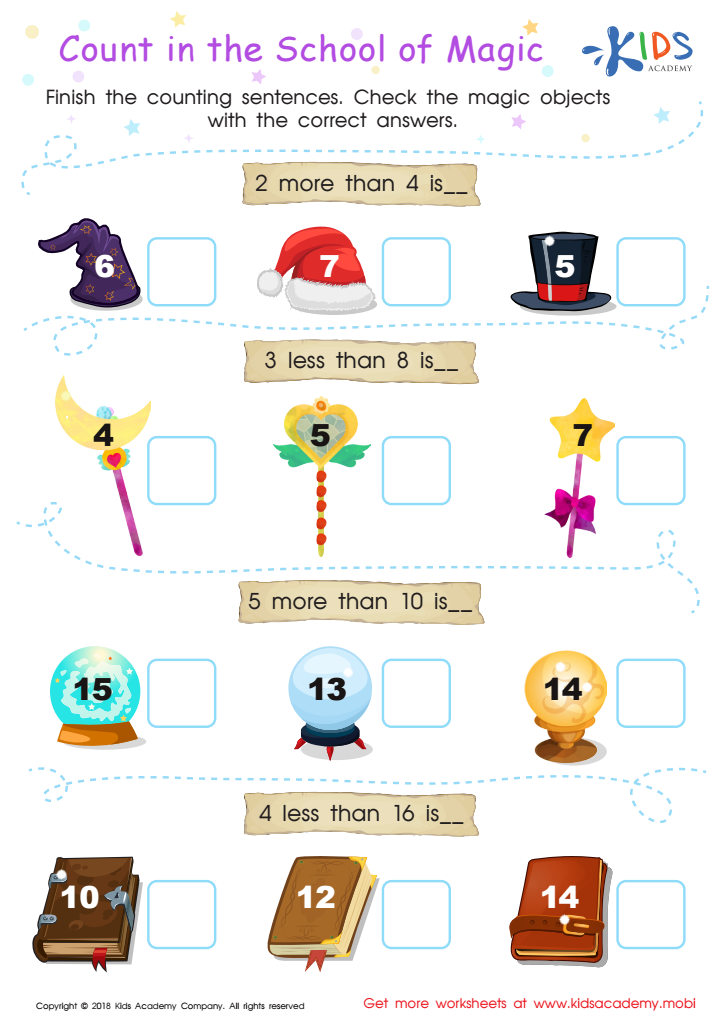

Count in the School of Magic Worksheet
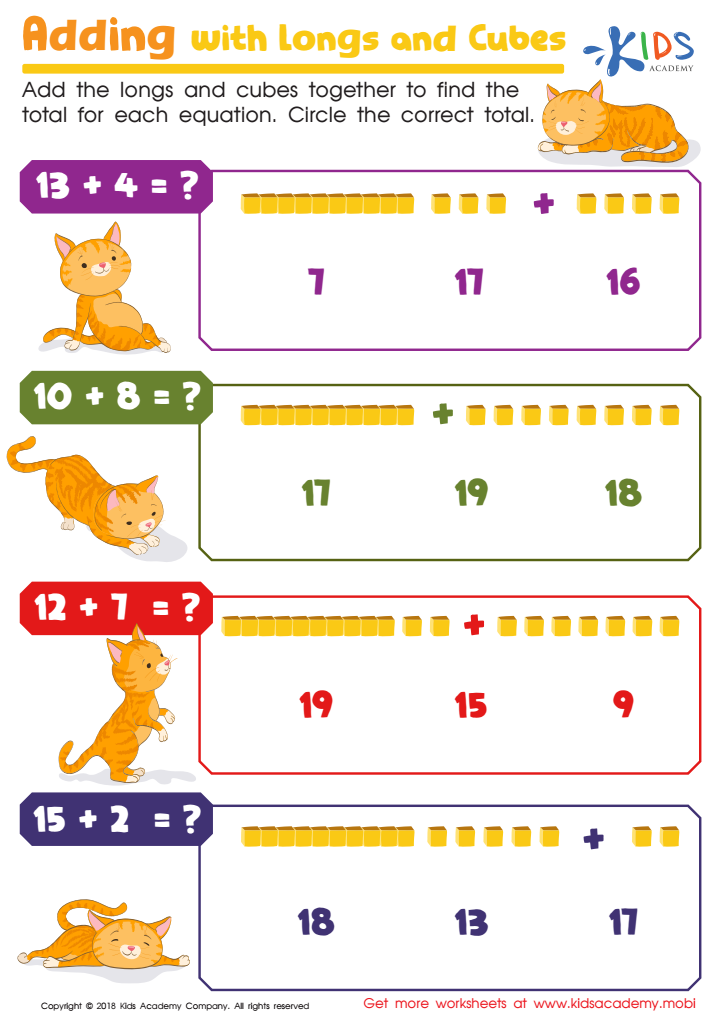

Adding With Longs and Cubes Worksheet
Parents and teachers should care about shape recognition, addition, and subtraction for children ages 7-9 because these skills form the foundation for more advanced mathematical concepts and critical thinking abilities. At this developmental stage, children transition from simple to more complex cognitive processes. Shape recognition nurtures their spatial awareness and geometry skills, helping them distinguish and categorize different shapes, sizes, and patterns in their environment. This visual-spatial reasoning is crucial for understanding more abstract mathematical concepts later on.
Addition and subtraction are equally vital as they are fundamental arithmetic operations. Mastering these basic skills allows children to build confidence in their mathematical abilities, fostering a positive attitude towards math as a subject. These operations teach them problem-solving strategies, logical sequencing, and the ability to manage numbers effectively. Practicing addition and subtraction can also enhance mental arithmetic, a skill that is incredibly useful in everyday life.
Moreover, integrating shape recognition with addition and subtraction can make learning more engaging. For instance, using shape puzzles that require summing or subtracting shapes can make abstract concepts tangible. This multi-faceted approach not only consolidates their understanding but also makes learning enjoyable, which is essential for lifelong educational success. So, supporting children in these areas equips them with essential skills for both academic and real-world scenarios.
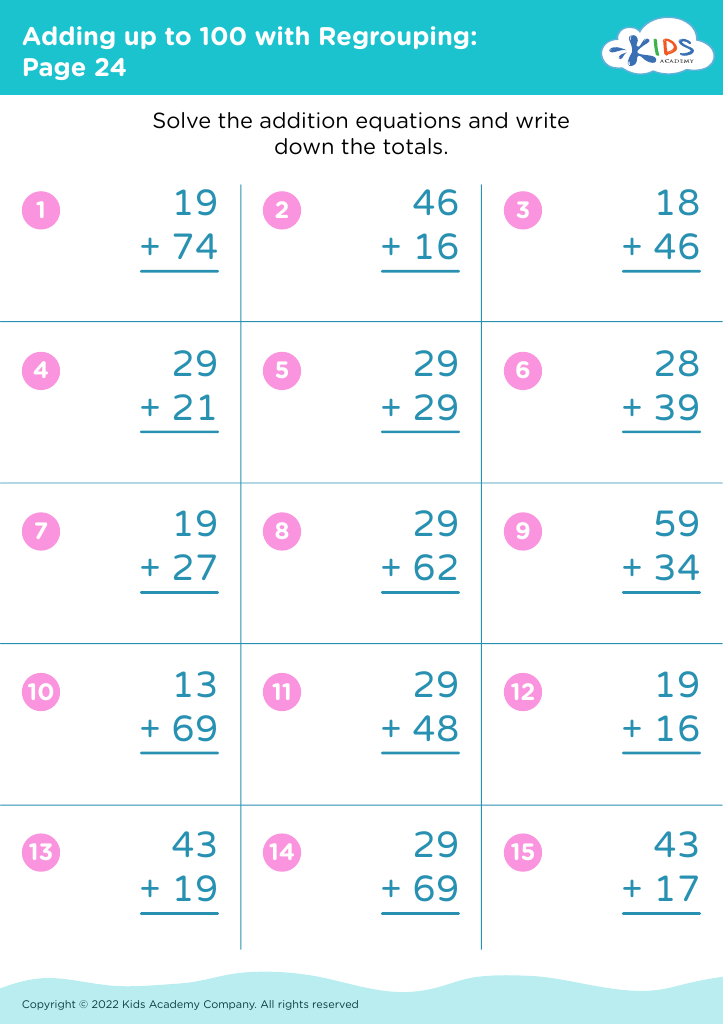

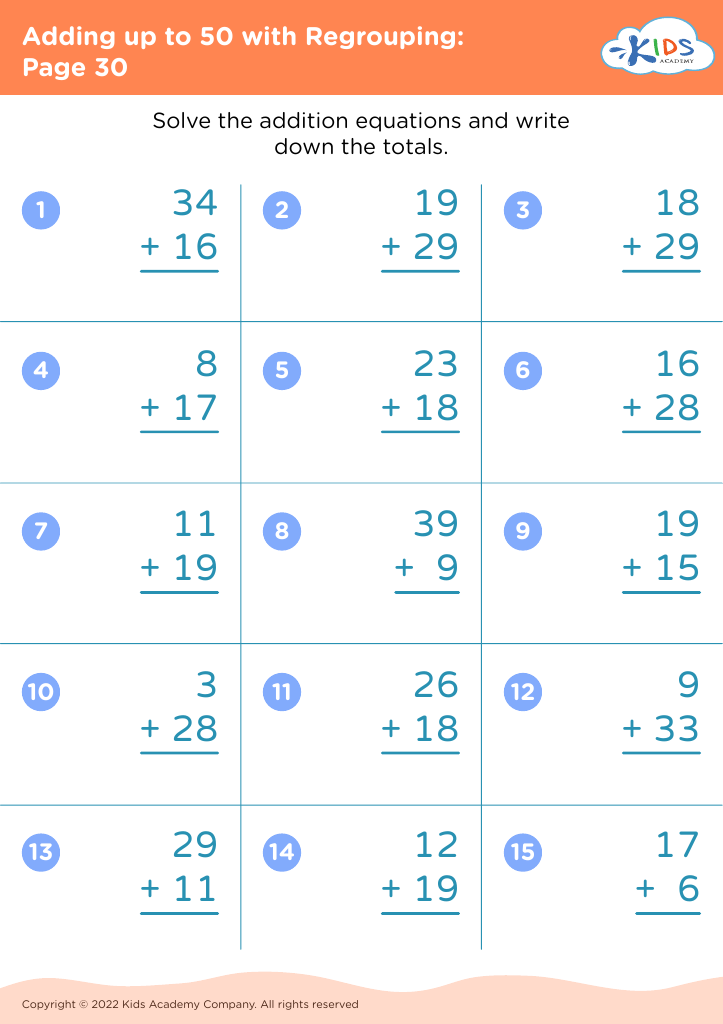
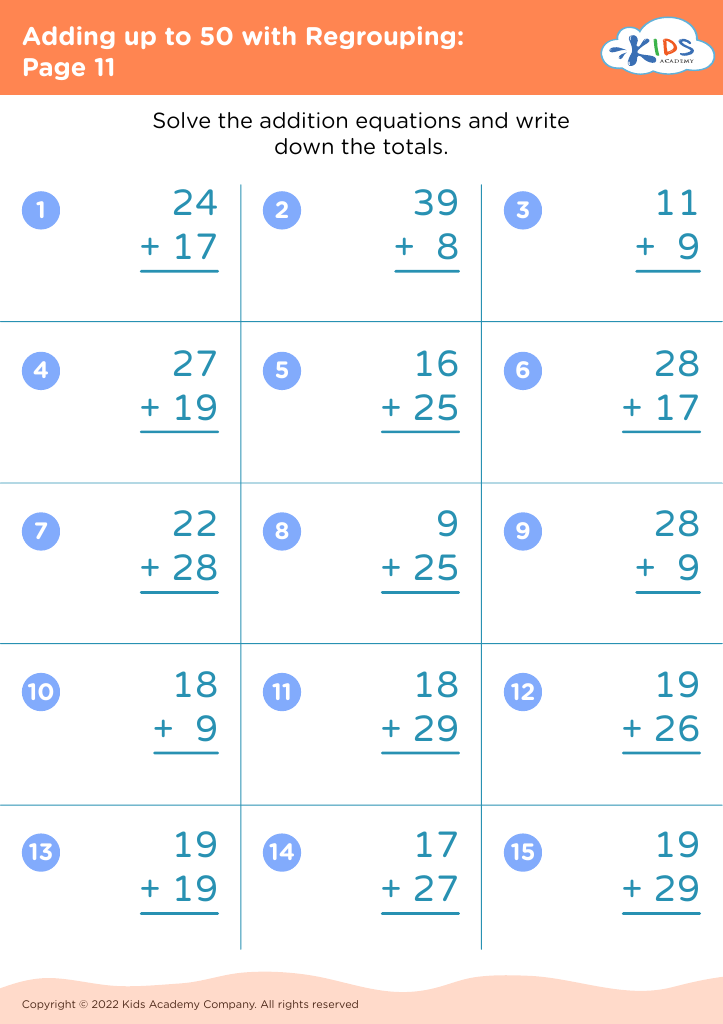
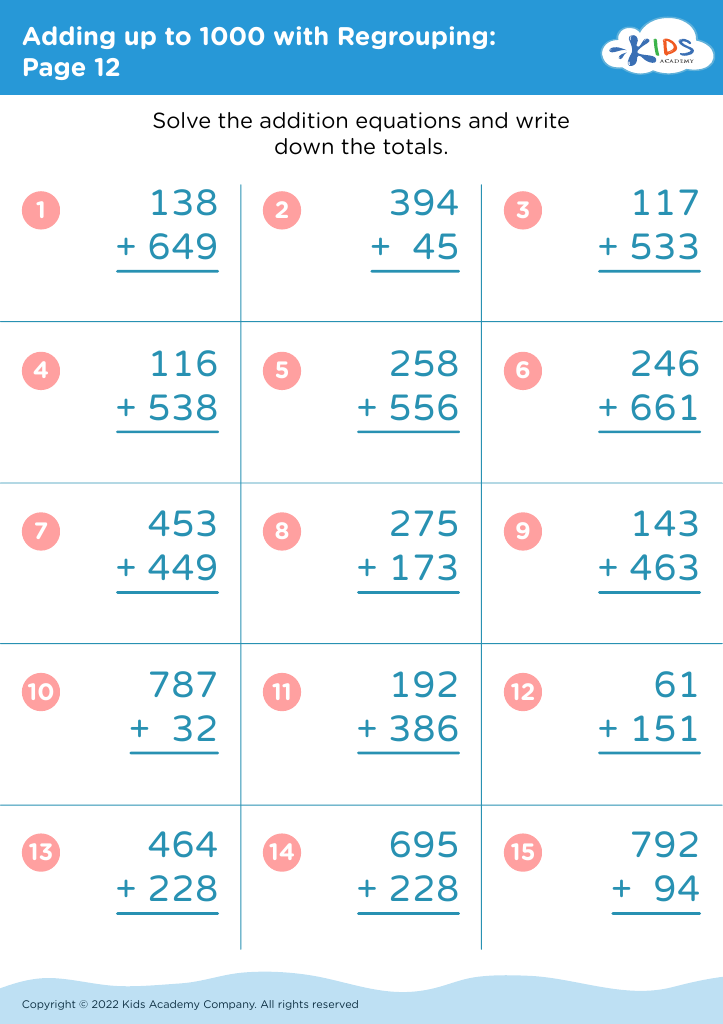
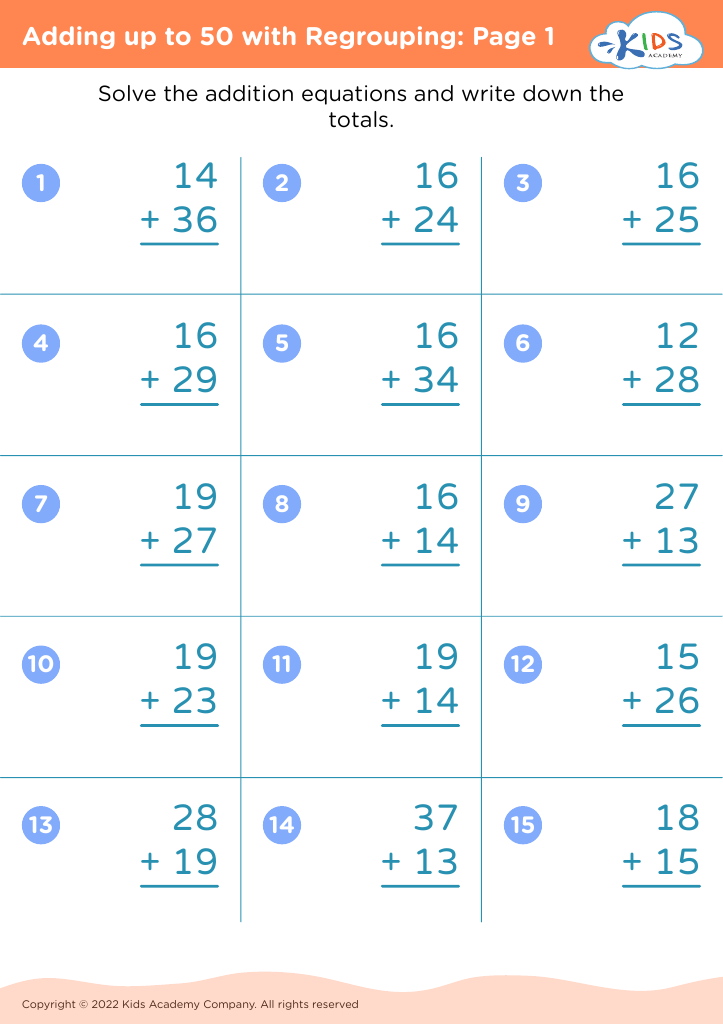
 Assign to My Students
Assign to My Students
